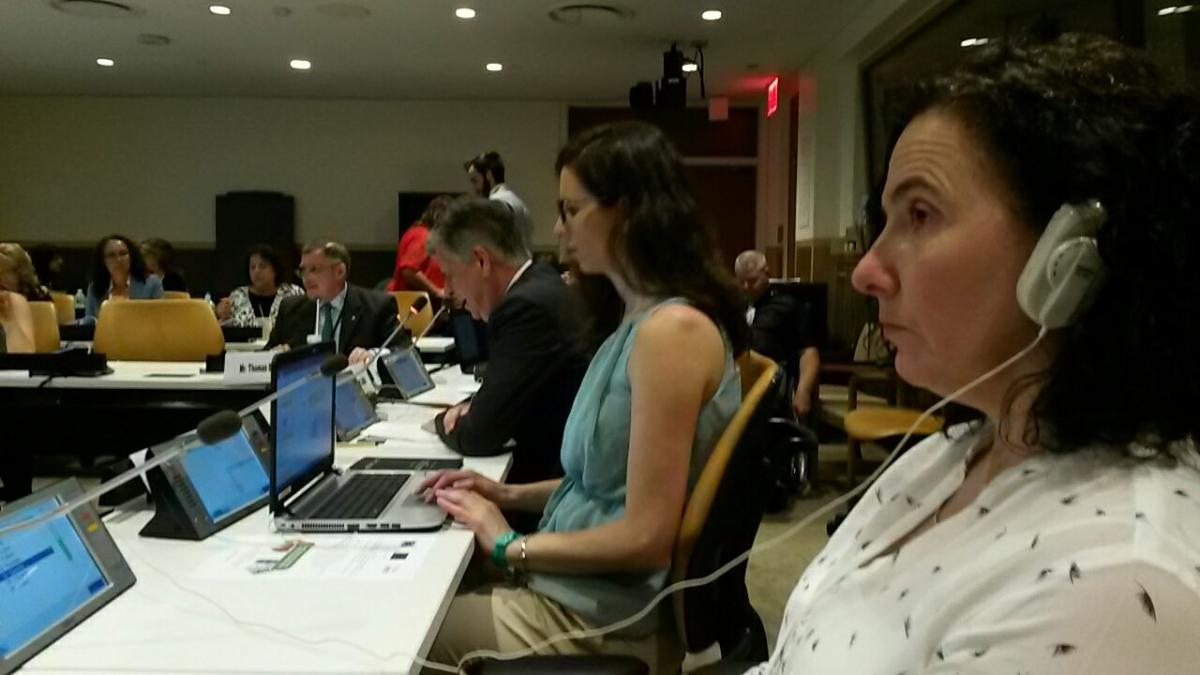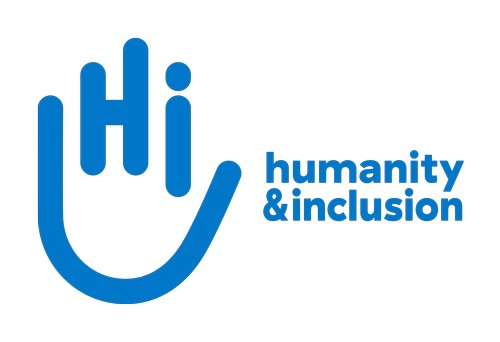Gender and Disability: Why we must consider intersectionality
- Written y Antonia Irazabal, Ministry of Social Development of Uruguay / Escrito por Antonia Irazabal, Ministerio de Desarollo Social de Uruguay -
[Español abajo]
“Gender” and “Disability” are words frequently used in our common exchanges. Surely you have heard these, used these, and thought of these? By using these words, each person refers to ideas and concepts that they have learnt throughout their life in society, and therefore, they carry a political, economic, and social meaning, as well as other transversal dimensions.
- Have you ever thought of combining these 2 terms?
Historically, the feminist claims and legal frameworks related to gender have not been focused on women and girls with disabilities. Besides, the claims expressed by persons with disabilities, and the actions led by them aiming for legal improvement, have not been considering the differences in exercising the rights of women and girls with disabilities, compared to men with disabilities (see 3rd General Comment by the CRPD Committee).

There are still myths and prejudice that influence the way persons with disabilities are perceived in the society: “asexual beings”, “dependent”, “eternal children”, “ill persons”, “they do not understand their reality, so they cannot make decisions”, “their opinion is not valid as they need approval”, etc.
This homogenous perception of persons with disabilities is distorted, and makes the traditional gender roles assigned to “men” and “women” being questioned or little considered by men and women with disabilities. It seems that their “bodies with limitations” cannot access these social constructs.
The CRPD, through article 6, highlights this reality that especially affects women and girls with disabilities, by emphasizing their existence, and the specificities in the exercise of their rights (see art. 6 of the CRPD).
- What happens with the sexuality of girls, boys, women and men with disabilities?
This reflection calls into question several spheres of the society: health sector, education sector, labor sector, housing sector, etc. Men and women with disabilities are questioned when they raise the idea of forming a family, having children, getting married, raising children, making decisions over their own bodies, deciding on contraception methods, seeking an abortion, etc.
Women with disabilities face discrimination because they are women, but also for living with a disability. The intersectionality between these two categories highlights the need to recognize the diversity of their realities; not just as a sum of discriminations, but rather as a complexity that needs to be considered through an intersectional framework.
The life path of women with disabilities is composed of many dimensions: sex/gender, age, place of living, economic situation and ethnical identity, among others. The complex barriers that prevent them from freely and fully exercising their fundamental rights are encountered at the intersection of the aforementioned components of their respective identities.
Gender-based violence affects the life of women with disabilities with the same gravity as the ones of women without disability, and at a higher frequency (approximately twice as much).
This type of violence uses the limitations of women with disabilities as a space in which to happen frequently and sustainably. It is very important to take into consideration the fact that women with disabilities are NOT the object of the desire of others, since the way they are currently perceived creates a shield that hides and protects the abuser, while distancing women with disabilities from the supports and help needed to build a way out of the violent situation.
In the Gender Sector of the National Program for Disability, within the Uruguayan Social development Ministry, we have implemented a strategy called “Barriendo barreras” (Sweeping barriers), with the objective of attracting attention on this intersectionality between gender and disability, and, progressively, overcoming the aforementioned barriers.
This strategy has two main aspects:
1. Sensitization and information workshops targeting the sexual and reproductive health sector, and the first level of care. They aim at exchanging with these professionals about the various barriers restricting the access to services for women and girls with disabilities; specifically regarding the barrier generated by professionals’ behaviors. Indeed, according to the study carried out on this topic in 2010 in Montevideo, 84% of women with disabilities that have already access services related to sexual and reproductive health have not gone back, because of the way they were treated there.
2. Workshops targeting women and girls with disabilities, their families, and other civil society actors, aiming at presenting the realities of persons with disabilities, as well as their sexual and reproductive rights; putting the emphasis on how gender-based violence affects them with extreme intensity.
Through the HI MIW initiative, you can receive key information and details about the history of this strategy, its implementation and evolution over the years, which has been supported by professional experts.
-------
Género y discapacidad son palabras frecuentes en nuestro lenguaje cotidiano.
Seguramente las has escuchado, usado, pensado?
Al enunciarlas cada persona alude a ideas y asociaciones que ha aprendido a lo largo de su vida en sociedad y, por tanto, el significado tiene cognotaciones políticas, económicas, vinculares, entre otras dimensiones transversales.
- Alguna vez, las has pensado en conjunto?
Históricamente las reivindicaciones feministas y las normativas relacionadas a temas de género no han hecho foco en las niñas y mujeres con discapacidad.
Por otro lado, los reclamos relacionados a las personas con discapacidad y sus conquistas a nivel legal no han hecho énfasis en las asimetrías existentes en el ejercicio de derechos entre las niñas y los niños, las mujeres y los hombres con discapacidades (ver Recomendación General N° 3 del Comité de Expertas/os de la CDPD).
Hay mitos y prejuicios que pesan mucho en CÓMO es percibida la población con discapacidad en la sociedad:
“seres asexuados”; “dependientes”, “niñas y niños eternos”, “personas enfermas”, “, “no entienden su realidad, no pueden tomar decisiones”, su discurso no es válido porque necesitan abales…
Esta percepción distorsionada y homogénea de las personas con discapacidad hace que los tradicionales roles de género asignados a “hombres” y a “mujeres” se vean fuertemente cuestionados y/o desestimados para las mujeres y los hombres con discapacidad. Parece que sus “cuerpos con limitaciones” no admiten estas depositaciones construidas socialmente.
La CDPD, a través del Art. 6 visibiliza esta realidad que afecta especialmente a las niñas y mujeres con discapacidad, dando luz sobre su existencia y las particularidades del ejercicio de sus derechos. (ver Art. 6 de la Convención sobre los Derechos de las Personas con Discapacidad)
- Qué pasa con la sexualidad de niñas, niños, mujeres y hombres con discapacidad?
Está puesta en “tela de juicio” en diferentes ámbitos de la sociedad: sector salud, sector educación, sector empleo, sector vivienda, etc.
Los hombres y mujeres con discapacidad son interpelados cuando plantean la idea de formar familias, tener hijas o hijos, tener parejas, ejercer la crianza, disfrutar de su propio cuerpo, decidir métodos de anticoncepción, interrumpir un embarazo, etc.
Las mujeres con discapacidad viven discriminación por ser mujeres pero también por tener discapacidad. La interseccionalidad entre estas dos categorías hace que sea necesario reconocer su realidad diversa; no como una sumatoria de discriminaciones sino como una complejidad de necesita un abordaje interseccional.
La trayectoria vital de las mujeres con discapacidad se compone de múltiples dimensiones: sexo/género, edad, lugar de vivienda, situación económica, etnia/raza, entre otras.
Las barreras complejas que impiden el ejercicio libre y pleno de los derechos fundamentales surgen entrecruzadas ante las múltiples interacciones de las mencionadas dimensiones.
La violencia de género llega a la vida de las mujeres con discapacidad con la misma fuerza que a la vida de todas las mujeres.
La expresión de esta violencia encuentra, en las limitaciones de las mujeres con discapacidad”, un terreno fuerte para expresarse e instalarse. Es muy importante que se tome en cuenta que la idea de que las mujeres con discapacidad NO SON objeto del deseo de los demás, funciona como un telón que invisibiliza y protege al abusador a la vez que distancia a las mujeres con discapacidad de los apoyos y ayudas necesarias para construir una forma de salida.
Desde el Área de Género del Programa Nacional de Discapacidad del Ministerio de Desarrollo Social en Uruguay, hemos implementado una estrategia llamada “Barriendo Barreras” con el objetivo de visibilizar esta interseccionalidad entre género y discapacidad y, progresivamente, ir bajando las barreras antes mencionadas.
Esta estrategia tiene 2 instancias:
1. Taller de sensibilización e información dirigido al sector de la salud sexual y reproductiva y al primer nivel de atención. Tiene el objetivo particular de reflexionar con las y los profesionales acerca de las diferentes barreras para el acceso de las mujeres y las niñas con discapacidad a los servicios; en particular sobre la barrera actitudinal, dado que en un estudio realizado sobre el tema en 2010 en Montevideo, se evidenció que el 84% de las mujeres con discapacidad que alguna vez concurrieron a servicios de SSRR no volvieron a ir por motivos del trato recibido.
2. Taller dirigido a las mujeres y niñas con discapacidad, sus familias y otros actores de la sociedad civil, con el objetivo de visibilizar la realidad de la población con discapacidad y sus derechos sexuales y reproductivos; enfatizando en cómo la violencia basada en género les afecta con extrema intensidad.
A través de la iniciativa MIW de HI puedes recibir mayor información y detalles de la historia de esta estrategia, su implementación y ajustes a lo largo de los años, dado que ha sido apoyada y supervisada por sus profesionales expertas.
Ajouter un commentaire
Copyright © 2025. Tous droits réservés.
